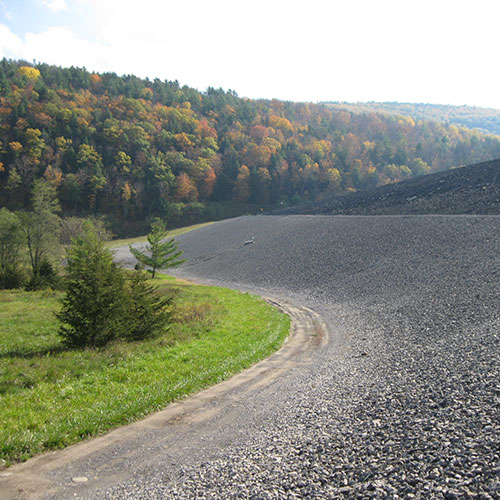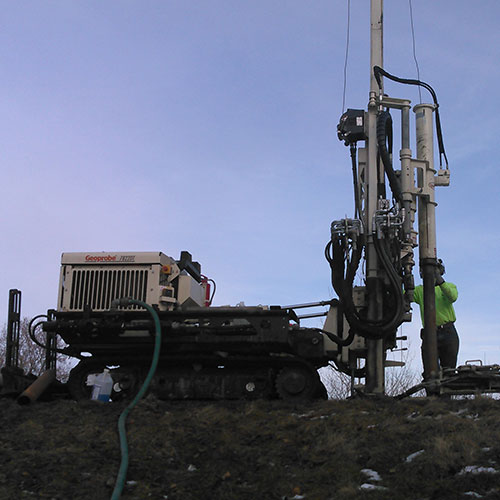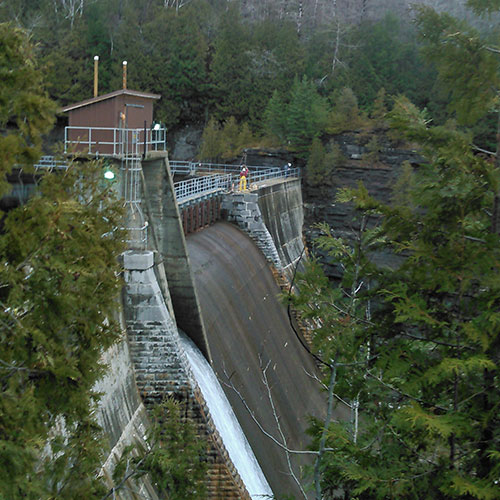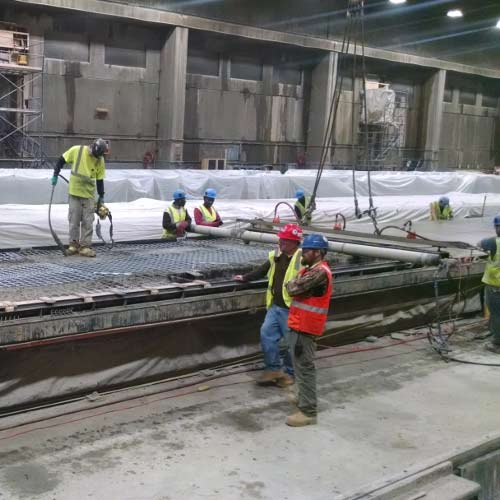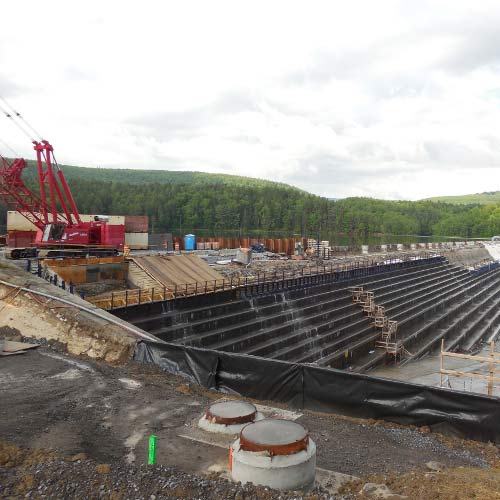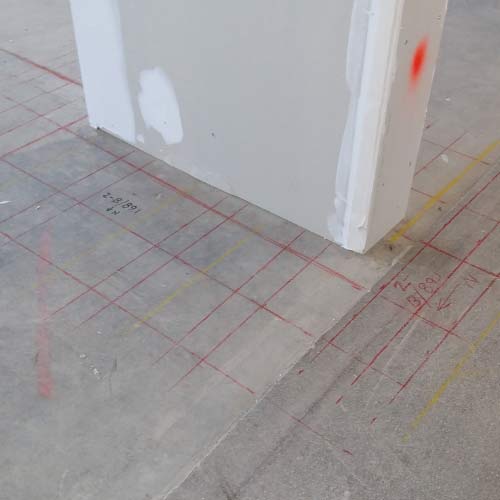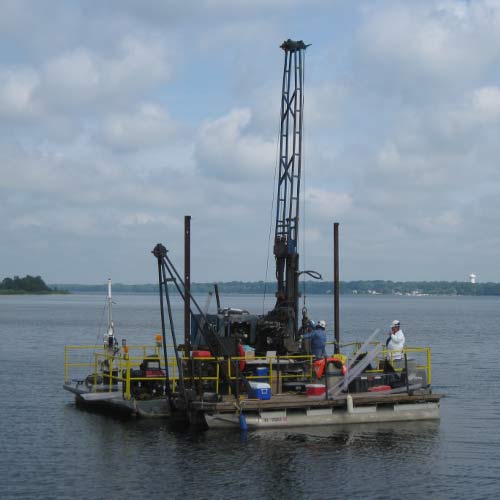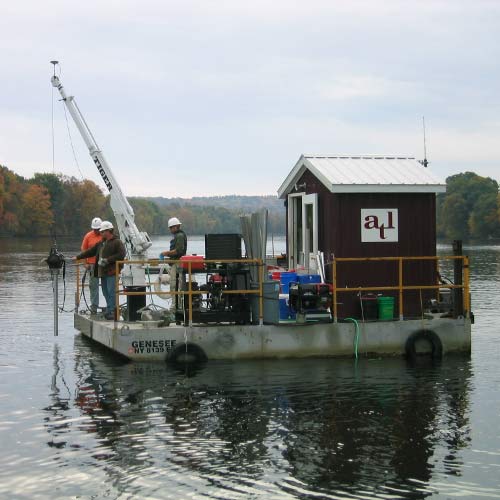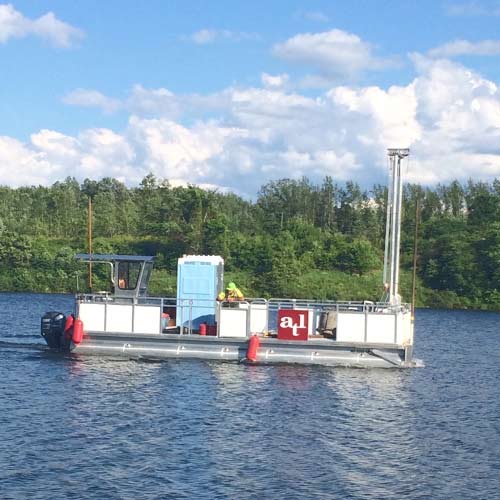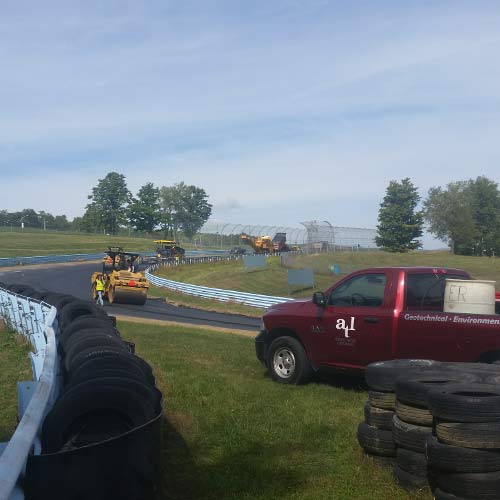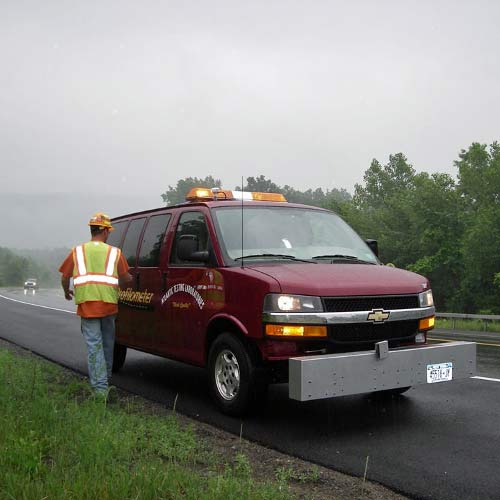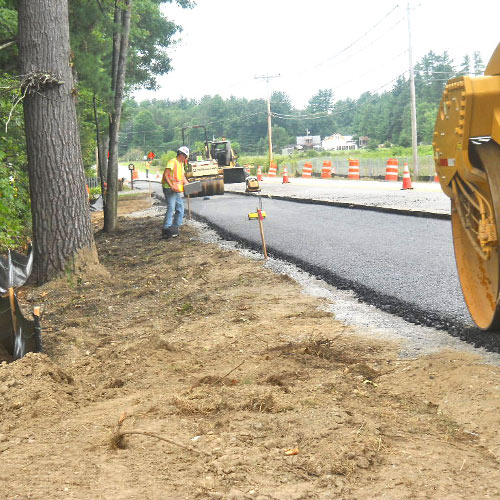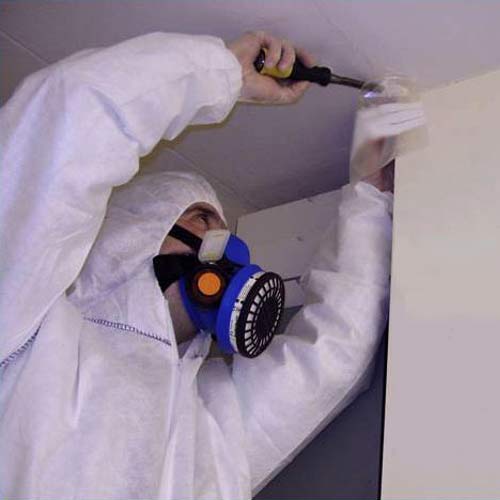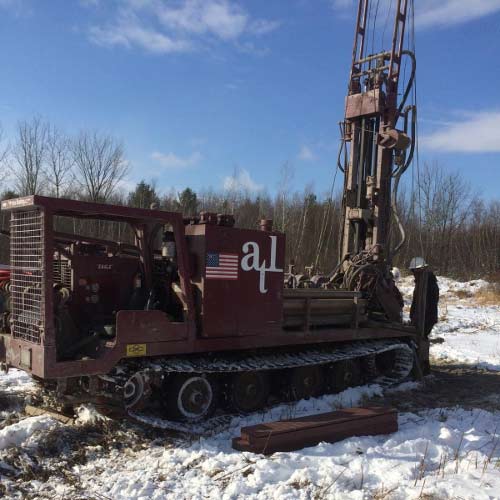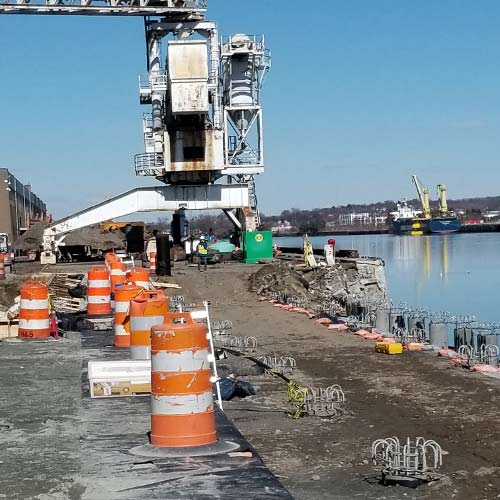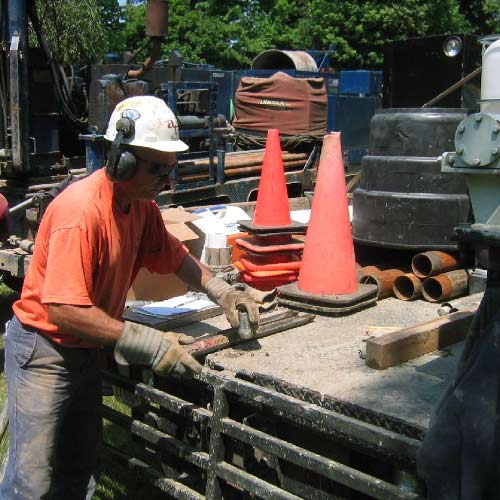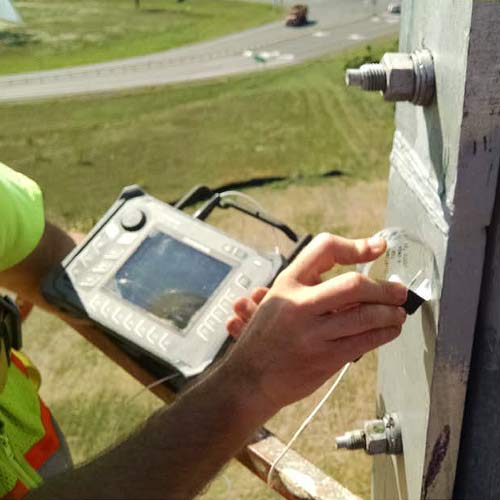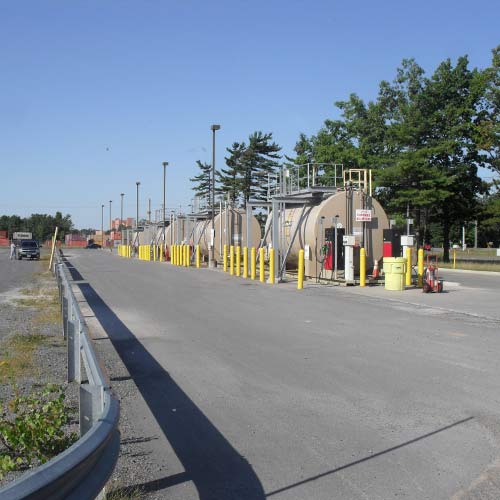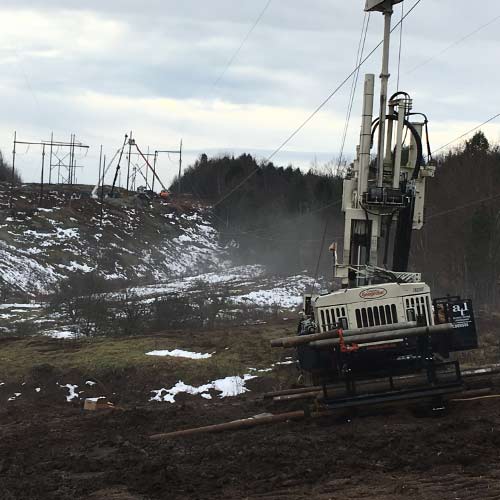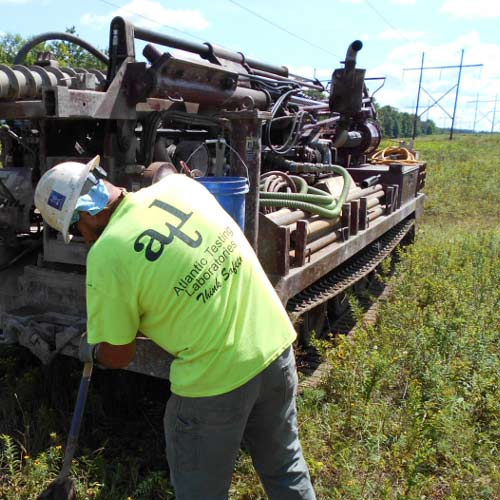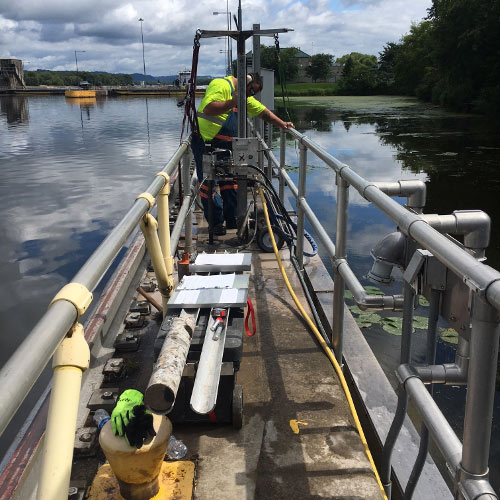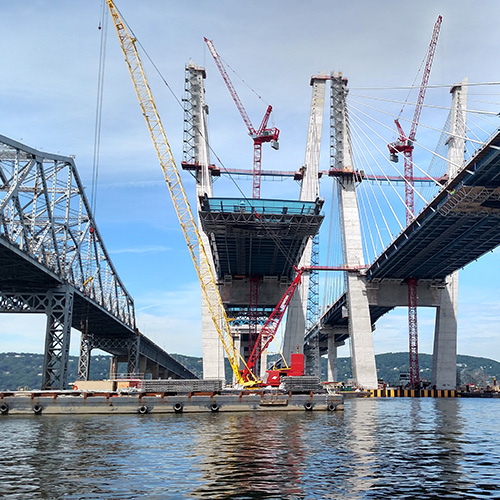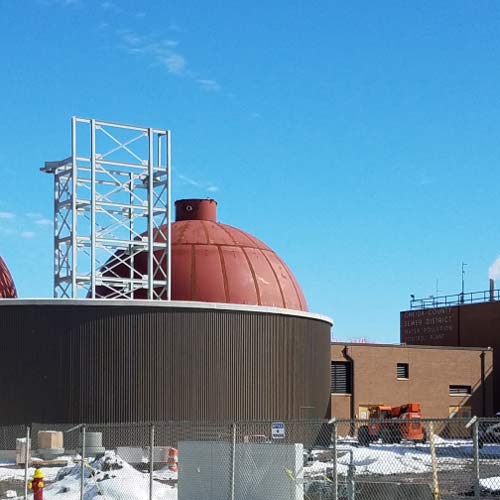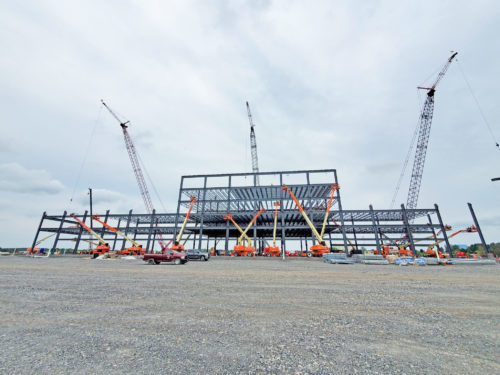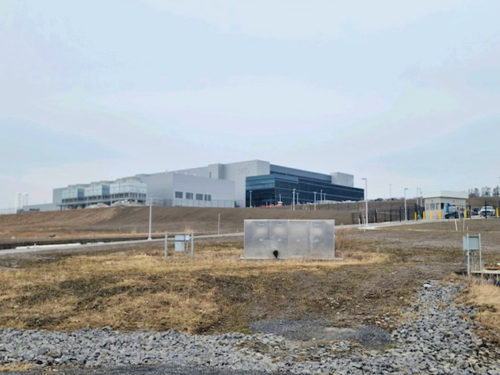
Brian T. Barnes, PE
Senior Engineer
Atlantic Testing Laboratories
Driven piles are a common and essential foundation system in construction, particularly when shallow soils are insufficient to support structural loads. By transferring these loads to deeper, more competent soil layers or bedrock, driven piles ensure the stability and safety of various types of infrastructure. Depending on project specifications and soil conditions, driven piles can be composed of steel H-piles, pipe piles, timber, or concrete.

Proper installation is critical to ensure the effectiveness of the pile foundation. An important consideration in pile installation is selecting the appropriately sized hammer. An undersized hammer may be incapable of driving the pile to the necessary depth and pile capacity, while an oversized hammer risks damaging the pile and generating excessive vibrations that may adversely affect nearby structures.
To mitigate these risks, the GRLWEAP14 (Wave Equation Analysis of Piles) software, developed by Pile Dynamics, Inc., is widely used across the industry. Wave Equation Analysis is a computational method for modeling the pile driving process by analyzing the dynamic interaction between the hammer, pile, and soil using wave mechanics. It predicts critical parameters, such as driving stresses, penetration rates, and ultimate pile bearing capacity. GRLWEAP allows engineers to simulate various hammer and pile combinations, helping to make informed decisions that reduce risk and optimize performance.
Key Benefits of GRLWEAP Wave Equation Analysis:
1. Hammer Suitability Assessment: Evaluate whether a specific hammer is appropriate for a given soil profile.
2. Pile Integrity Evaluation: Analyze potential stress levels to ensure the structural integrity of the pile during driving.
3. Inspector’s Blow Count Chart: Develop charts estimating the required hammer blow count to reach target resistance levels at different stroke lengths.
4. Set-Up Prediction: Estimate potential increases in pile resistance over time, based on soil properties and pile depth.The Benefits of Wave Equation Analysis for Driven Pile Hammers
These benefits help prevent pile damage, avoid costly delays or rework, and protect pile integrity during installation.
The New York State Department of Transportation (NYSDOT) specifies the use of Wave Equation Analysis under Item 551 for NYSDOT driven pile projects. As detailed in the Special Provision “Dynamic Pile Monitoring,” an independent testing firm must perform this analysis to ensure that the pile driving system is capable of installing the piles to the specified tip elevation, while adhering to the permissible driving stresses.
Many projects across New York have successfully employed Wave Equation Analysis to optimize their pile driving systems. These case studies consistently demonstrate reduced project costs, improved compliance, and increased efficiency, resulting in fewer construction delays and expedited project completion.
ATL can perform a Wave Equation Analysis on your pile driving system. For more information, contact Brian Barnes at 315-735-3309, info@atlantictesting.com, or visit AtlanticTesting.com.

